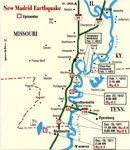Hello! guy's
I want to sharing with you some information about, what is weather radar..? and how its work...? A weather radar, is a type of radar used to locate precipitation, calculate its motion, estimate its type (rain, snow, hail, etc.), and forecast its future position and intensity...I hope you will got it...
I want to sharing with you some information about, what is weather radar..? and how its work...? A weather radar, is a type of radar used to locate precipitation, calculate its motion, estimate its type (rain, snow, hail, etc.), and forecast its future position and intensity...I hope you will got it...



